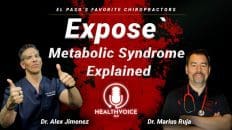The obesity pandemic has put the world population to the test. Once considered an esthetic condition now is a significant risk factor for insulin resistance. Research has shed light on obesity and adipose tissue association with multiple metabolic disorders in the last decades. Consequently, visceral adipose tissue (VAT) due to its secretion of inflammatory cytokines such as interleukin-6, tumor necrosis factor-a, macrophage chemoattractant protein-1, and resistin has positioned adipose tissue as a functional organ instead of an energy storage tissue.
Adiponectin
Despite the pro-inflammatory factors secreted by VAT, adiponectin is the most abundant anti-inflammatory and atheroprotective adipokine secreted by fatty tissues. Indeed, adiponectin reduces hepatic gluconeogenesis, increases glucose uptake, and up-regulates insulin sensitivity. Besi
The obesity pandemic has put the world population to the test. Once considered an esthetic condition now is a significant risk factor for insulin resistance. Research has shed light on obesity and adipose tissue association with multiple metabolic disorders in the last decades. Consequently, visceral adipose tissue (VAT) due to its secretion of inflammatory cytokines such as interleukin-6, tumor necrosis factor-a, macrophage chemoattractant protein-1, and resistin has positioned adipose tissue as a functional organ instead of an energy storage tissue.
Table of Contents
Adiponectin
Despite the pro-inflammatory factors secreted by VAT, adiponectin is the most abundant anti-inflammatory and atheroprotective adipokine secreted by fatty tissues. Indeed, adiponectin reduces hepatic gluconeogenesis, increases glucose uptake, and up-regulates insulin sensitivity. Besides, descriptive studies show that patients with visceral obesity have lower adiponectin plasma levels. Moreover, decreased levels of plasma adiponectin result in higher insulin resistance.
Furthermore, low adiponectin levels and high levels of visceral fat mass were associated with B-cell dysfunction leading to insulin resistance. While abdominal obesity is strongly associated with pro-inflammatory cytokines and hormones that result in insulin resistance, and now high levels of visceral fat add to these conditions.
Adiponectin circulates in plasma in three isoforms with different biological activities, a low-molecular-weight trimer, a middle-molecular weight hexamer, and a high-molecular-weight 12-to18- mer. Also, the high-molecular-weight (HMW) adiponectin has a hormone-type biological activity. HMW adiponectin has a better association with insulin sensitivity than total adiponectin levels. Besides, adiponectin has proven to suppress the expression of TNF-a and IL-6, therefore enhancing insulin sensitivity by reducing inflammation. On the other hand, there is a strong association between TNF-a synthesis by VAT and adiponectin activity inhibition.
Adiponectin and glucose metabolism
The adiponectin’s glucose metabolism effect is mediated through its receptors, adiponectin receptor 1 (adipoR1) and adiponectin receptor 2 (adipoR2). While adipoR1 expresses ubiquitously, adipoR2 is predominantly expressed in the liver. Like adiponectin, both receptors are inversely associated with obesity and insulin resistance, as shown by mouse models—consequently, the reduction of visceral obesity associates with an increased expression of both receptors.
Hepatic expression of adipoR2 resulted in an increased expression of genes such as glucokinase and peroxisome proliferator-activated receptor-α (PPAR-α) and its target genes acyl-CoA oxidase. These factors act in the hepatic glucose uptake. Furthermore, the activation of AMPK resulted in a reduction of hepatic glucose production, translating to reduced plasma glucose. The expression of both adipoR1 and adipoR2 increased fatty acid oxidation, improved insulin resistance, and decreased hepatic triglyceride content. Consequently, these findings were corroborated in mouse models when the downregulation of adipoR1 resulted in the inactivation of the adiponectin-induced AMPK pathway. Therefore, insulin resistance and endogenous glucose production were the results of these mechanisms. Similarly, the absence of adipoR2 resulted in a reduced activity of PPAR-a signaling pathways and increased insulin resistance.
Adiponectin clinical application
The metabolic effects of adiponectin play a significant role in treating obesity and insulin resistance mediated conditions. Nevertheless, it’s important to emphasize that the HMW adiponectin isoform’s gene expression is mediated by peroxisome proliferator-activated receptor-gamma (PPARγ), which is activated by ω-3 polyunsaturated fatty acid (PUFA). Therefore, the gene interaction among diet and body composition is essential to the expression of HMW adiponectin and its receptors.
A recent study aimed to determine the dietary ω-6:ω-3 PUFA ratio and its interaction with adiposity and serum adiponectin levels in 170 subjects. Further, this study determined body composition with bioelectrical impedance analysis by InBody systems. The body composition measurements included: weight, BMI, waist circumference, body fat percentage (BFP), and body fat in kg. Also, biochemical markers like total cholesterol, HDL-C, LDL-C, triglycerides, glucose, HOMA-IR, and HMW adiponectin were measured. Further, the ω-6:ω-3 PUFA ratios were separated by tertiles. Therefore, tertile 1  ω-6:ω-3  <8.38:1, tertile 2 ω-6:ω-3 ≥ 8.39:1 – ≤ 11.74:1 and tertile 3 ω-6:ω-3 < 11.74:1.
The body composition results concluded that BFP on the 3rd tertile was higher than the first tertile. Consequently, the BMI and waist circumference were higher in the 3rd tertile. Furthermore, the patients in the 3rd tertile showed higher levels of insulin and HOMA-IR. However, HMW adiponectin levels presented no significant difference among the three groups of patients.
The increased prevalence of obesity has raised awareness about the metabolic and inflammatory mechanisms up-regulated by the adipose tissue. The excess adiposity associated with overfeeding and a sedentary lifestyle plays a significant role in developing low-grade inflammation. Contrary to the pro-inflammatory cytokines synthesized by the adipose tissue, adiponectin has anti-inflammatory properties. However, its production is limited when high levels of visceral abdominal fat are present.
Body Composition
Tracking body composition is an integral part of any nutritional intervention. Body composition is even more vital if we are dealing with inflammatory processes that may affect our health—clinical guidelines to treat metabolic conditions such as diabetes state that prevention is critical. Having a body composition assessment will provide knowledge about the main compartments of your body. In this case, you want to know what your PBF and VAT are.
The inclusion of a balanced diet, an active lifestyle, and maintenance of normal body weight (with low adipose tissue) is key to the maintenance of an anti-inflammatory state. Despite the current information on adiponectin and its beneficial effects on insulin, an anti-inflammatory state depends on varied factors and not just one adipokine. Nevertheless, tracking our body composition, and practicing the recommended dietary and activity guidelines is key to keep insulin resistance at bay. -Ana Paola RodrÃguez Arciniega. Masters in Clinical Nutrition.
From the kitchen to your genes
The best way to imrove our diet is to include better options and varied options of foods. DHA is an essential, and anti-inflammatory PUFA that is commonly found in fish oil, cod liver oil, mackerel, salmon, fish roe, anchovy, whitefish, herring, trout, bass, tilefish, sardine, halibut, oysters, squid, flatfish, mussels, shrimp, crab, perch, scallops.
The best possible way to include protein, PUFAS and keep warm in this weather is with a soup.
4 servings
- 1lb of skinless, boneless and chopped herring or mackerel
- 1/2 lb shirmp skinless, clean
- 1 Red pepper, chopped
- 1/2 can of Tomato paste or 2-3 pureed tomatoes
- 2 carrots, chopped
- 1/2 onion. chopped
- 3 cellery sticks
- 16oz vegetable broth
- olive oil
- salt
- 1 clove of garlic
In a saucer add 2-3 tbsp of olive oil and add the cellery, carrots, onion, garlic and sauteé them for 3-5 minutes. Season as desired.
Add the vegetable broth with the tomato pureé, heat until it broils.
Add the mackerel or preferred fish, cook until white. Then add the shrimps (until pink) and pepper.
Serve with rice or totasted bread.
References
Rabe, Katja et al. “Adipokines and insulin resistance.â€Â Molecular medicine (Cambridge, Mass.) vol. 14,11-12 (2008): 741-51. doi:10.2119/2008-00058.Rabe
Torres-Castillo, Nathaly et al. “High Dietary ω-6:ω-3 PUFA Ratio Is Positively Associated with Excessive Adiposity and Waist Circumference.â€Â Obesity facts vol. 11,4 (2018): 344-353. doi:10.1159/000492116
Moon, Hyun Uk et al. “The Association of Adiponectin and Visceral Fat with Insulin Resistance and β-Cell Dysfunction.â€Â Journal of Korean medical science vol. 34,1 e7. 26 Dec. 2018, doi:10.3346/jkms.2019.34.e7
Additional Online Links & Resources (Available 24/7)


Online Appointments or Consultations:Â https://bit.ly/Book-Online-Appointment
Online Physical Injury / Accident Intake Form: https://bit.ly/Fill-Out-Your-Online-History
Online Functional Medicine Assessment: https://bit.ly/functionmed
Disclaimer
The information herein is not intended to replace a one-on-one relationship with a qualified health care professional, licensed physician, and is not medical advice. We encourage you to make your own health care decisions based on your research and partnership with a qualified health care professional. Our information scope is limited to chiropractic, musculoskeletal, physical medicines, wellness, sensitive health issues, functional medicine articles, topics, and discussions. We provide and present clinical collaboration with specialists from a wide array of disciplines. Each specialist is governed by their professional scope of practice and their jurisdiction of licensure. We use functional health & wellness protocols to treat and support care for the musculoskeletal system’s injuries or disorders. Our videos, posts, topics, subjects, and insights cover clinical matters, issues, and issues that relate and support, directly or indirectly, our clinical scope of practice.* Our office has made a reasonable attempt to provide supportive citations and has identified the relevant research study or studies supporting our posts. We provide copies of supporting research studies available to regulatory boards and the public upon request. We understand that we cover matters that require an additional explanation of how it may assist in a particular care plan or treatment protocol; therefore, to further discuss the subject matter above, please feel free to ask Dr. Alex Jimenez or contact us 915-850-0900.  Read More…
Dr. Alex Jimenez DC, MSACP, CCST, IFMCP*, CIFM*, CTG*
email:Â coach@elpasofunctionalmedicine.com
phone: 915-850-0900
Licensed in Texas & New Mexico
General Disclaimer
Professional Scope of Practice *
The information herein on "Adiponectin: Anti-inflammatory Agent of VAT" is not intended to replace a one-on-one relationship with a qualified health care professional or licensed physician and is not medical advice. We encourage you to make healthcare decisions based on your research and partnership with a qualified healthcare professional.
Blog Information & Scope Discussions
Welcome to El Paso's Premier Wellness and Injury Care Clinic & Wellness Blog, where Dr. Alex Jimenez, DC, FNP-C, a Multi-State board-certified Family Practice Nurse Practitioner (FNP-BC) and Chiropractor (DC), presents insights on how our multidisciplinary team is dedicated to holistic healing and personalized care. Our practice aligns with evidence-based treatment protocols inspired by integrative medicine principles, similar to those found on this site and our family practice-based chiromed.com site, focusing on restoring health naturally for patients of all ages.
Our areas of multidisciplinary practice include Wellness & Nutrition, Chronic Pain, Personal Injury, Auto Accident Care, Work Injuries, Back Injury, Low Back Pain, Neck Pain, Migraine Headaches, Sports Injuries, Severe Sciatica, Scoliosis, Complex Herniated Discs, Fibromyalgia, Chronic Pain, Complex Injuries, Stress Management, Functional Medicine Treatments, and in-scope care protocols.
Our information scope is multidisciplinary, focusing on musculoskeletal and physical medicine, wellness, contributing etiological viscerosomatic disturbances within clinical presentations, associated somato-visceral reflex clinical dynamics, subluxation complexes, sensitive health issues, and functional medicine articles, topics, and discussions.
We provide and present clinical collaboration with specialists from various disciplines. Each specialist is governed by their professional scope of practice and their jurisdiction of licensure. We use functional health & wellness protocols to treat and support care for musculoskeletal injuries or disorders.
Our videos, posts, topics, and insights address clinical matters and issues that are directly or indirectly related to our clinical scope of practice.
Our office has made a reasonable effort to provide supportive citations and has identified relevant research studies that support our posts. We provide copies of supporting research studies upon request to regulatory boards and the public.
We understand that we cover matters that require an additional explanation of how they may assist in a particular care plan or treatment protocol; therefore, to discuss the subject matter above further, please feel free to ask Dr. Alex Jimenez, DC, APRN, FNP-BC, or contact us at 915-850-0900.
We are here to help you and your family.
Blessings
Dr. Alex Jimenez DC, MSACP, APRN, FNP-BC*, CCST, IFMCP, CFMP, ATN
email: coach@elpasofunctionalmedicine.com
Multidisciplinary Licensing & Board Certifications:
Licensed as a Doctor of Chiropractic (DC) in Texas & New Mexico*
Texas DC License #: TX5807, Verified: TX5807
New Mexico DC License #: NM-DC2182, Verified: NM-DC2182
Multi-State Advanced Practice Registered Nurse (APRN*) in Texas & Multistate
Multistate Compact RN License by Endorsement (42 States)
Texas APRN License #: 1191402, Verified: 1191402 *
Florida APRN License #: 11043890, Verified: APRN11043890 *
* Prescriptive Authority Authorized
ANCC FNP-BC: Board Certified Nurse Practitioner*
Compact Status: Multi-State License: Authorized to Practice in 40 States*
Graduate with Honors: ICHS: MSN-FNP (Family Nurse Practitioner Program)
Degree Granted. Master's in Family Practice MSN Diploma (Cum Laude)
Dr. Alex Jimenez, DC, APRN, FNP-BC*, CFMP, IFMCP, ATN, CCST
My Digital Business Card
RN: Registered Nurse
APRNP: Advanced Practice Registered Nurse
FNP: Family Practice Specialization
DC: Doctor of Chiropractic
CFMP: Certified Functional Medicine Provider
MSN-FNP: Master of Science in Family Practice Medicine
MSACP: Master of Science in Advanced Clinical Practice
IFMCP: Institute of Functional Medicine
CCST: Certified Chiropractic Spinal Trauma
ATN: Advanced Translational Neutrogenomics




















